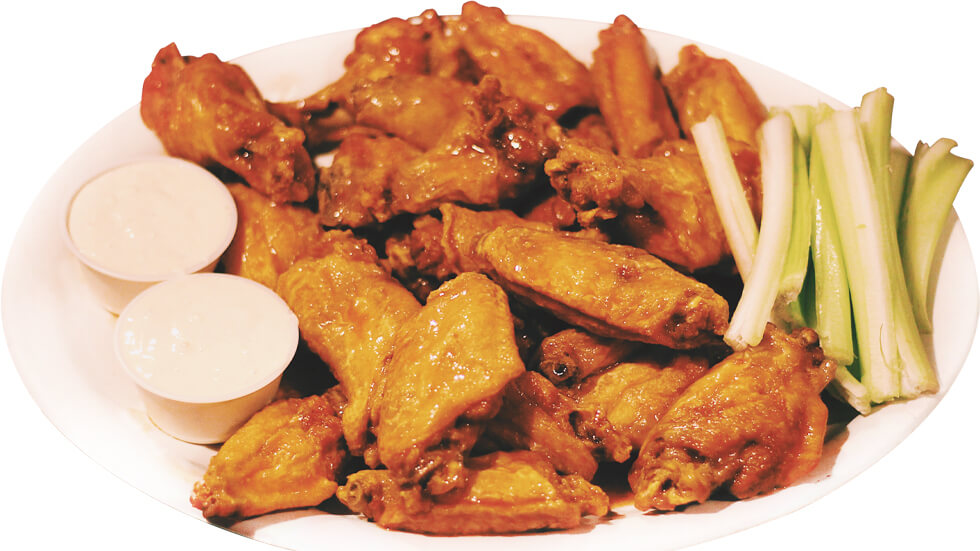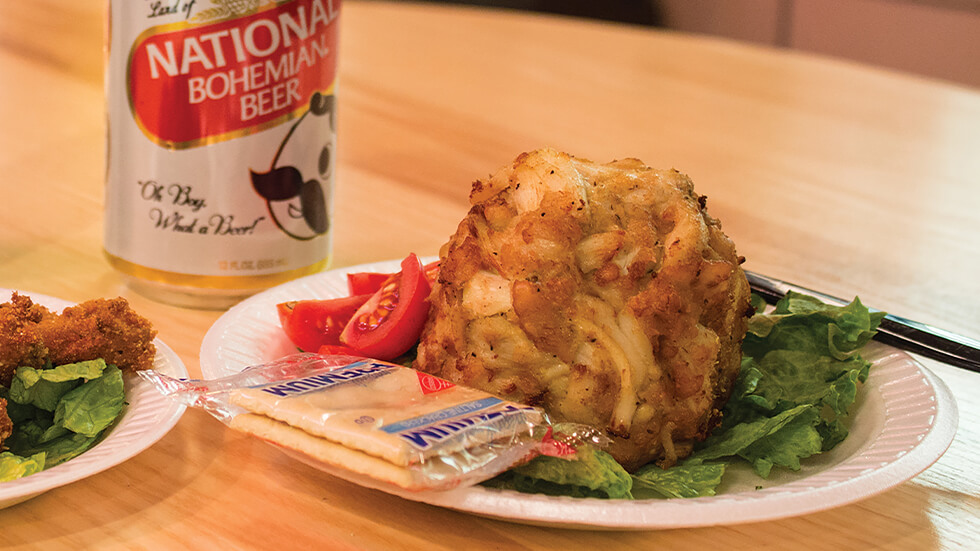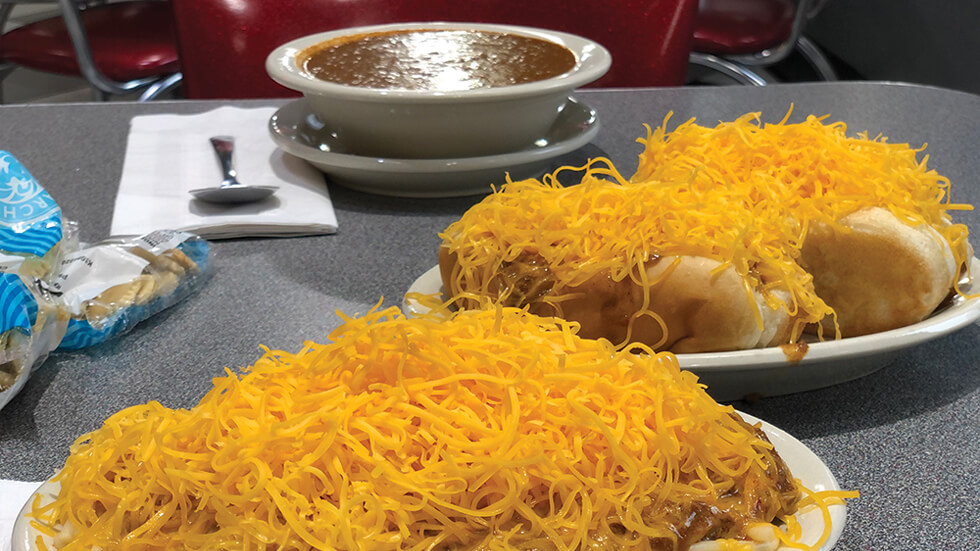

There’s food. And then there’s foood, the kind of mouthwatering, lip-smacking, stomach-satisfying foodstuffs that Americans can’t get enough of. We’re talking about iconic fare that’s not only worth logging a few extra miles on the treadmill but also merits racking up some travel miles just to savor it. These are famous foods so special that they’re intertwined with a sense of place and, as such, are best enjoyed in the very destinations where they were invented or perfected.
We present five of our gotta-have gastronomical delights along with suggestions on where to get a great taste of them.
WINGING IT
Sure, you can find delectable deep-fried, orange-sauce-slathered chicken wings at your favorite local restaurant or bar, but if you want the real deal, beeline to Buffalo, New York. While credit is due to the late John Young, who claimed his (long-shuttered) John Young’s Wings n’ Things was the first place in Buffalo in the 1960s to pair a tomato-based sauce with fried wings (served whole), it’s the Anchor Bar on Main Street that’s widely recognized as the birthplace of Buffalo wings.
The story goes like this: One Friday night in 1964, a group of Dominic Bellissimo’s friends came into the bar craving a late-night bite. Dominic, whose family owned the business and was tending bar at the time, asked Teressa Bellissimo, his mother and the Anchor Bar’s cook extraordinaire, to whip up something good. From some leftover chicken initially destined for the stockpot—voilà!—the Buffalo wing was born.

The secret is in the sauce of the Anchor Bar's world-famous wings.
Photo by Drew Brown
Though Dominic, Teressa and patriarch Frank Bellissimo have all passed—and the Anchor Bar now has more than a dozen franchise locations in the US and Canada—what continues to make the Anchor Bar’s wings exceptional is the legacy of Teressa’s secret sauce, with versions varying from spicy—including an Extreme Heat concoction—to medium and mild. As a matter of course, wings come with cut celery and the Anchor Bar’s house-made blue cheese dressing on the side.
To order a batch at the original 1935 Anchor Bar like a local, call them simply “wings,” for qualifying this authentically Buffalonian comestible by its city namesake would be…well, redundant.
FROM TIDE TO TABLE
Folks from the Maryland Office of Tourism joke that if the state flag weren’t already so cool, they’d fly an image of the blue crab over the statehouse. Clearly, Marylanders are serious about their state crustacean, harvested from the Chesapeake Bay and prepared every which way, including hard shell or soft shell; steamed, sautéed, broiled or fried; in soup, as a dip or stuffing, or—our pick—in the form of a cake.
Consuming a classic Maryland crab cake is a rite of passage for seafood-loving visitors, who have options aplenty to fulfill that goal at a trove of restaurants and markets along the statewide Maryland Crab & Oyster Trail.

The award-winner Maryland jumbo lump crab cakes are the must-have meal at Faidley's Seafood in Baltimore's Lexington Market.
Photo courtesy of Maryland Office of Tourism
Among those landmark markets is fourth-generation family-owned and -operated Faidley’s Seafood. A fixture in Baltimore’s historic Lexington Market since 1886, Faidley’s is famous for its fist-size crab cakes packed with jumbo lumps of sweet Maryland crab meat that’s been hand-mixed with crumbled saltines; infused with Old Bay seasoning, dry mustard and a mayo-based sauce; and fried (or broiled upon request) to golden perfection.
You can order just the crab cake or have it as a sandwich; either way, it comes with a complement of lettuce, tomato and crackers. Get them to go, or better yet, grab a spot at standingroom-only tables in the friendly, no-frills market.
A SLICE OF PARADISE
The saying may be “as American as apple pie” in most of the US, but in the Florida Keys, they like to say it’s “as Keysey as Key lime pie.” Indeed, this tart, creamy creation—composed of condensed milk, egg yolks, the juice of the tiny yellow Key lime, a graham cracker (or sometimes, chocolate) crust, and whipped cream or meringue topping—is quintessentially the Keys.

Kermit's Key West Key Lime Shoppe's famous Key Lime Pie
Photo courtesy of Kermit's Key West Key Lime Shoppe
The jury is still out on who invented Key lime pie, with perhaps the most prevailing story crediting a cook known as Aunt Sally who worked at the Curry Mansion in Key West and either crafted the first Key lime pie or perfected it from a recipe shared by area fishermen. Most local experts agree, however, that it originated in the late 1800s, before modern refrigeration. With no refrigeration or baking required (the Key lime juice “cooks” the pie through the souring process), the pie quickly became the darling of desserts and, in 2006, was named Florida’s official pie.

Key Lime Pie covered in Belgian chocolate on a stick is one of Kermit's Key West Key Lime Shoppe's specialties.
Photo courtesy of Kermit's Key West Key Lime Shoppe
Eateries across the Keys, from Key Largo to Key West, feature Key lime pie prominently on their menus, with each putting an indelible twist on the recipe. A standout among them is Kermit’s Key West Key Lime Shoppe, acclaimed not only for its traditional Key lime pies but also for its pie on a stick: a Key lime pie bar hand-dipped in Belgian chocolate and then frozen; a strawberry Key lime version comes coated in white chocolate.
No matter how you slice it, this treat delivers a sweet taste of the Keys.
PARLOR PERFECTION
If the concept of a food “parlor” seems reserved only for ice cream, you need to swing over to Cincinnati, Ohio, where chili parlors serving up Cincinnati chili reign supreme. Not to be confused with chili con carne, Cincinnati chili is a thin, ground-beef-based, Mediterranean-spiced tomato sauce that was first introduced to the Queen City in the early 1920s by Greek and Macedonian immigrants.

Camp Washington Chili’s Cincinnati chili is just one of the many tasty reasons this neighborhood institution has earned an America’s Classics Award by the James Beard Foundation.
Photo courtesy of Camp Washington Chili
Often used to top spaghetti or coneys (hot dogs), this ultimate comfort food is ordered by the numbers—literally. While it’s possible—albeit quizzical—to request chili in a bowl, or “one-way,” we recommend ordering the “two-way,” chili heaped over spaghetti; the “three-way,” the two-way plus mounds of shredded cheddar cheese; the “four-way,” the three-way with either chopped onions or beans; or the “five-way,” a meld of chili, spaghetti, cheese, onions and beans. Cheese coneys are also delish, and all “ways” are typically accompanied by a side of oyster crackers and hot sauce.
While local chains Skyline Chili and Gold Star are ubiquitous on the chili parlor scene, for our money and appetite, Camp Washington Chili checks all the boxes. Opened in 1940, this family-owned 1950s-style hotspot is legendary for its made-fresh-daily chili with a blend of spices known only to the family. In 2000, the James Beard Foundation bestowed an America’s Classics Award upon Camp Washington for its timeless appeal and quality food reflecting the character of its community, confirming that this chili parlor’s signature offering helps define Cincinnati in a most delicious way.
KING OF THE BARBECUE
With Texas’ long history in cattle ranching, it’s no surprise that beef, not pork, is the keystone of Lone Star State barbecue, and Texas brisket, an inexpensive cut of meat, is its starring staple.
Texas brisket can be traced back to barbecuing traditions of area Native American, Spanish, Mexican and Black communities as well as culinary traditions of the German, Czech and Jewish immigrants who opened meat markets in the mid-1800s to early 1900s (butchers smoked leftover meat to prevent spoilage) as well as Jewish delis (brisket has always been a mainstay of Seder meals) across the state. Merge those influences with local ranching and low-and-slow cooking methods, and you have all the makings of juicy, melt-in-your-mouth modern-day Texas brisket, elevating this once-inferior cut of meat, once commonly used for stews or even animal feed, to Cadillac status.
Today, smoked brisket is the National Dish of Texas, and some of the best brisket around can be found in Lockhart, which boasts the title of The Barbecue Capital of Texas. Here, tucked between Austin and San Antonio, four renowned barbecue joints—Black’s Barbecue, Kreuz Market, Smitty’s Market and Chisholm Trail Bar-B-Que—dish up smoked brisket to an est imated 250,000 people annually.

Barbecuing Texas brisket is elevated to an art form at Black’s Barbecue in Lockhart, Texas.
Photo courtesy of Black's Barbecue
Black’s Barbecue lays claim as the oldest barbecue joint in Texas owned by the same family (since 1932) and the first to offer brisket as a menu item in its restaurant in the 1950s. Following the time-honored methods of his grandfather, pitmaster Kent Black applies a simple rub and then slow-smokes his barbecue with native post oak wood in a pit built in 1949 that’s big enough to hold a whopping 500 pounds of meat. Enjoy it with a heaping of potato salad, pinto beans or coleslaw on the side.
As they say, go big or go home. Of course, there are too many scrumptious foods across the US to go home, and we can’t think of a better excuse for a palate-pleasing road trip.
